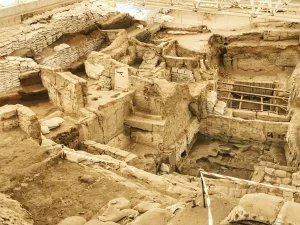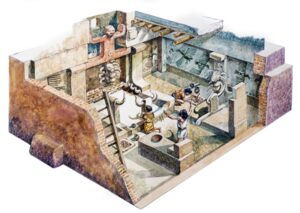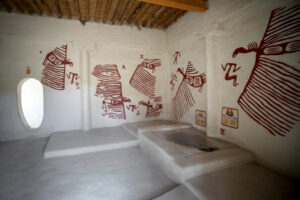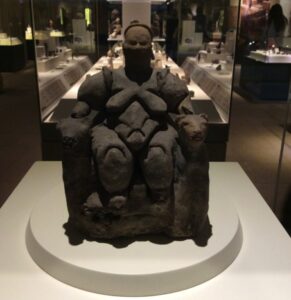Çatalhöyük was discovered in 1958 by James Mellaart. The first excavations were conducted between 1961-1963. The ongoing excavations since the 1960s have turned our understanding of human history upside down. And seem poised to continue doing so… Now, It’s your turn to learn the secrets whispered by Çatalhöyük about the past.
Why is Çatalhöyük Important?
As a 9,000-year-old cultural heritage, Çatalhöyük represents a vast Neolithic and Chalcolithic settlement. A surpassed village life to experience urbanization. It was the home of the first farming community discovered. For that, it was added to the UNESCO World Heritage List in 2012.
Çatalhöyük is considered the first human settlement. It was one of the largest and most populous settlements of its time, changing the course of history with its existence. Until its discovery, we thought that the people of that period were in their most primitive form. Learning that our ancestors, whom we assumed to be simple hunter-gatherers and nomads, had achieved societal organization much earlier was an incredible discovery.
How Old is Çatalhöyük?
The Çatalhöyük Neolithic City is located on the Southern Anatolian Plateau in Turkey. It covers an area of about 14 hectares. The longer East Mound consists of 18 Neolithic settlement layers dating between 7400 and 6200 BC, featuring wall paintings, reliefs, sculptures, and other artistic elements symbolizing social organization and transition to settled life. The West Mound displays cultural characteristics of the Chalcolithic Period, dated between 6200 and 5200 BC.

With these features, Çatalhöyük is the most significant evidence of the transition to urban life. Despite other Neolithic sites in the Middle East and Anatolia, Çatalhöyük stands out for the size of its remains, and the density of its population. But most importantly, for its strong artistic and cultural traditions.
What was the Architecture of Çatalhöyük Like?
It is estimated that over 8,000 people lived in Çatalhöyük, where houses were built adjacently. Each house varied in size and was constructed using a mixture of sun-dried mud and straw, adobe, reeds, wooden poles, and plaster. The houses structured adjacently gave the city a street-like appearance.
Interestingly, the houses had no doors. People entered through the roofs, possibly reached by wooden ladders. The reason for this is not definitively known by researchers. However, it is considered that the oldest houses built were no more sophisticated. We know that ancient humans dug pits, lined them with stones, and constructed wooden roofs. The placement of doors on the roofs might have been safer, considering the dangerous animals in the Konya Plain. Since they are evidenced by wall decorations featuring leopards and lions.

Beneath the stairs in the main rooms was a hearth for cooking. The higher parts inside the rooms were designated for sleeping and other activities, with deceased individuals buried underneath these rooms. Side rooms served as storage.
The First Passion for Art
The details of these houses indicate that the desire to beautify living spaces is older than we thought. Excavations have revealed that Çatalhöyük’s walls featured hunting scenes and decorative geometric patterns.

Çatalhöyük’s unique art perspective sets it apart from its contemporaries. The presence of art in homes suggests no surprise. Successful depictions of hunting scenes, geometric patterns, stars, leopards, birds, deer, and other animals were found. The frequency of wall drawings inside the houses suggests a possible connection with the deceased, indicating a community with spiritual beliefs. This is significant as we previously thought that people of that era might not have developed a specific religion or belief system.
The Birth of Belief
Figurines discovered during the Çatalhöyük excavations provide unique insights into the beginnings of the mother goddess cult (worship) and beliefs of the time. These figurines, made of baked clay and stone, range in size from 5 to 15 cm. Depict fat, large-breasted, big-hipped figures, sometimes in the act of giving birth, proving that the symbol of abundance and fertility is older than we thought.

Bull figures were frequently used on the walls of buildings, and many houses contained reliefs made by plastering real bullheads with clay, suggesting the bull was an important religious symbol for the Çatalhöyük people.
Art and Religion: Göbekli Tepe
Headless human figures seen in Çatalhöyük wall paintings also appear on the carved reliefs of Göbekli Tepe megaliths. Scientists have long been curious about this, generally agreeing that these anthropomorphic, genderless characters are related to rituals and religion. Essentially, Çatalhöyük houses the world’s first temple, with Göbekli Tepe being known as the oldest known temple in human history.
